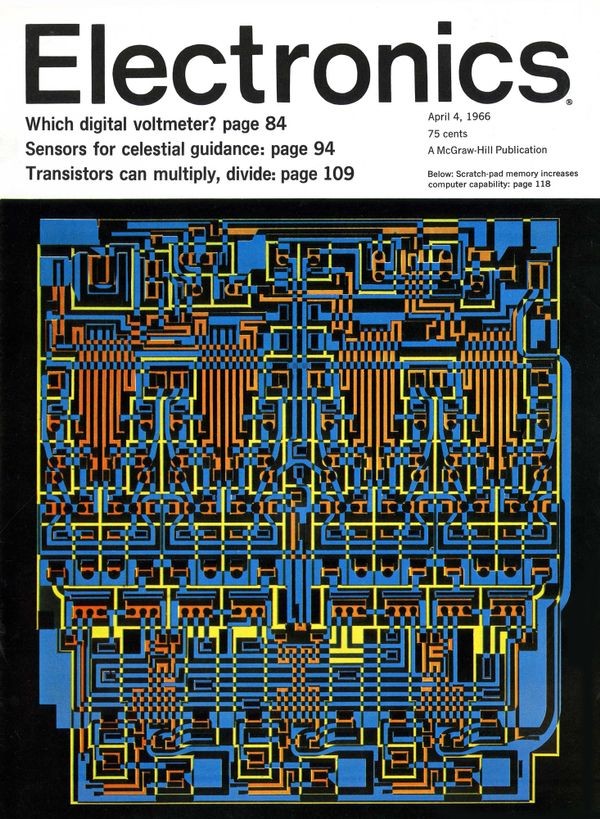Bipolar RAMs in High Speed Applications
IBM Components Division 64-bit RAM
Superimposed on its predecessor, a core memory array, this 64-bit RAM chip designed in 1968 served as the cache memory for the IBM System 370 Model 145.
Tech Talk: Bipolar RAMs in High Speed Applications
Static random access memory (SRAM) chips built with the bipolar IC process became practical for high-speed computer applications in the mid-1960s.
Scientific Data Systems and Signetics cooperated to produce an 8-bit RAM for the Sigma 7 scientific computer in 1965. That same year, IBM Components Division designed a 16-bit, system-protect memory array for the System 360 Model 95. In 1966, Transitron built a 16-bit scratchpad memory for the Honeywell Model 4200 minicomputer, which became the first widely second-sourced RAM.
With IBM’s first all-semiconductor memory machine, the System 370 Model 145 announced in October 1970, the company’s designs graduated to 64-bits for the cache memory and 128 bits for the main memory. In 1970, Fairchild built memory systems for the ILLIAC IV supercomputer using 256-bit chips.
Signetics/Scientific Data Systems 8-bit RAM
The April 4, 1966 issue of Electronics magazine featured an 8-bit RAM designed by Signetics for the SDS Sigma7 in the article, “Integrated scratch pads sire new generation of computers.”
View Artifact DetailFairchild Semiconductor 256-bit RAM
Fairchild engineers used 512 of these 256-bit chips in each of seventy processor element memory systems made for the Burroughs ILLIAC IV supercomputer in 1970-1971.
View Artifact Detail

